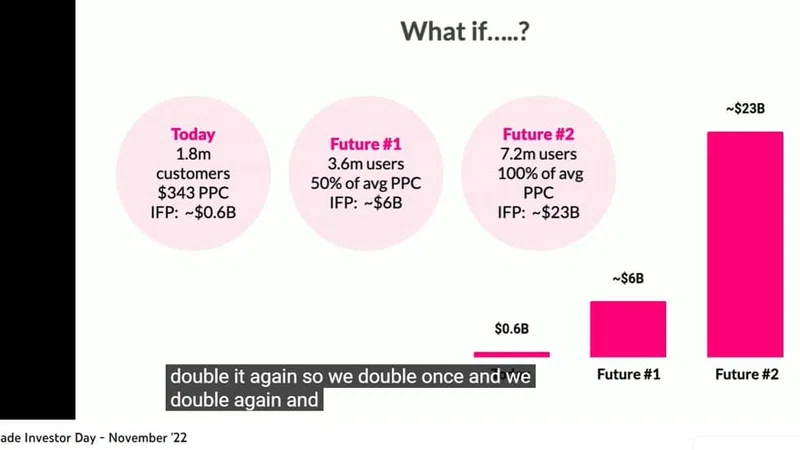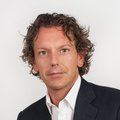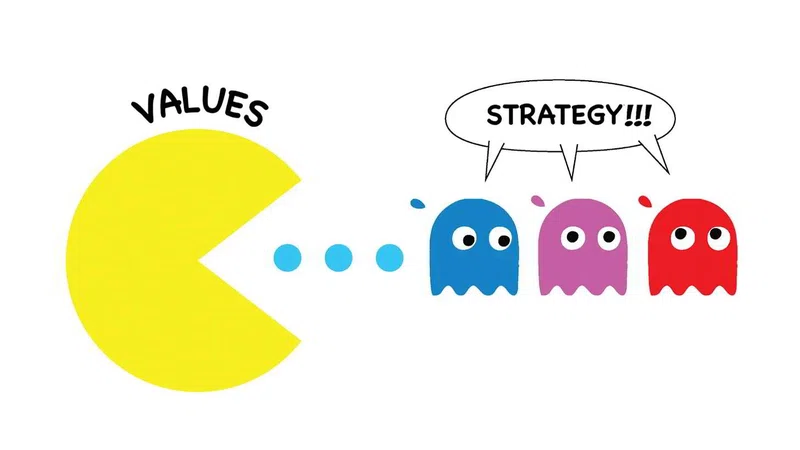At the early stage of creating a fintech startup, the neobank application, one can suddenly encounter an interesting dilemma.
In studying consumers and competitors, it was found that most companies spent money to attract customer personas who soon lost interest in their product. It turned out that the characteristics of buyer personas worked successfully only at the level of the sales funnel and at most until the "first sale." Later, their interest was lost to a great extent or even completely.
This suggests that it is impossible to build a successful customer retention strategy based on buyer persona characteristics. However, there is a solution to get out of this situation.
Wrong targeting also affects the main consumers, user personas, who leave soon after the buyer personas. As a result, even the most interesting and technologically advanced product is left out due to an incorrect marketing strategy.
The reason for that is the rapid change of behavioral characteristics of buyer personas in each phase of product use. The better the buyer personas master new features, while moving along the user path, the more likely they are to misunderstand what they should do next. In most cases, buyer behavior does not match the scenarios that UX researchers and CJM managers study and prepare so thoroughly.
In fact, there are three main categories of customers, not two. Let's figure out who is who.

The User Persona is the end user of the product.
The Buyer Persona is the person who makes the initial decision to buy the product (or in our case, to install the app).
The Customer Success Persona is the mysterious user who shares the characteristics with the user and buyer.
The fintech industry is solely focused on studying its users. However, not everyone understands the need to characterize them in more detail and closely examine the life cycle of each persona in the product. Let's say a clear understanding of the customer is essential for both development and marketing teams. If you concentrate only on studying one type of user, the service is doomed to fail.
There needs to be more emphasis on customer success strategies.This business strategy aims to engage users more deeply by personalizing the entire customer experience. The customer success strategy treats users as individuals rather than accounts, thus allowing the team to have a holistic understanding of the audience. That is, we move from a model where the product has impersonal accounts and their problems to a model where we know exactly what kind of person uses the product, and build personal relationships with them.
In general, the essence of personas is needed to evaluate the personalized experience of using the product. Paying attention only to account statistics is an outdated approach.
The main reason for young startups' failure is the lack of a customer success manager. Only a few of them try to do something about user retention and minimize user churn, although this cannot be considered a comprehensive approach to customer retention. Meanwhile, segmentation and searching for similar characteristics allows you to clearly identify at what point a customer may have difficulty using a product and promptly eliminate it.
It is important to retain users not just their quantity is the indicator of the startup success. The truth lies in the figures. Reducing customer churn by 5% only provides revenue growth of at least 25% of loyalty. It is also important to understand that the cost of acquiring new users is much higher than the cost of retaining those who have already used the product at least once.
The current trends in the development of fintech startups show that everyone has scattered information about customers. The reason for this is that product development, marketing, sales, technical support and growth teams cannot agree on who they are working with and what a real user looks like. If the product consists of more than one service, it makes the process even more complicated. Buyer personas strongly associate themselves with traditional commercial banks and still trust them. Product developers are so passionate about the process that they forget what the customer really believes in. The Grab service is an example.
The Grab application covers virtually all areas of life, from food to investments. At a first glance, the buyer persona in this case is a city resident who wants one app to meet all their needs. However, by studying only buyer personas, you can answer only part of the questions.
To fully understand the target audience and clients, companies habitually divide the users into cohorts, study behavioral patterns, compare and evaluate them using hundreds of parameters. Services for analyzing apps, websites, and market data help us gain insight into this. For example, all the necessary statistics can be gathered in the Eurostat section of the Europa website and on the Statista website.
After examining this data, it will be quite clear that there are differences between user personas, buyer personas, and customer success personas. They should be taken into account to ensure the successful functioning of the service.

So what exactly is the dilemma? Let’s consider a simple example. Imagine a father (Mark) and his five-year-old son (Daniel) going to the store to buy the kid his first ever bike. When making a choice, each of them pays attention to different characteristics.
Mark is looking for a functional, reliable, well-built and, most importantly, affordable option. Therefore, he offers his son a tricycle. Daniel, in turn, considers the color, modern design and distinction – none of his friends should have the same model. So the boy's choice falls on a sports bike, which is too big for his age. Another reason is his favorite cartoon character riding this kind of bike, and all the kids in the class are obsessed with this character.
In the end, Mark buys Daniel the simplest tricycle to learn how to ride it first. Daniel is not happy with this decision at all. We can clearly see the mismatch of two people’s goals and expectations here.
In this example, Daniel, who will ride the bike, is a user persona. Correspondingly, Mark, who has bought the bike, is a buyer persona. The customer success persona will only appear when the user learns to ride, grows up a bit, and gets the sport bike he has been dreaming of.
In this case, we have to find a common denominator of our characters. For example, we can identify the key reason for the buyer to continue using our product. Later, this will help us understand how to acquire and retain users. By dividing attention between them, analyzing their experience with the product individually, and analyzing their behavior, we can anticipate their demands in the future, or at least respond to them in time. It takes time to learn at what point a customer might be so disappointed that they give up on a product.
The ultimate goal here is the synchronization of all areas, from development to design. It makes it easier for the team to work on the product since they clearly understand the impact it will have on consumers. When the entire process is built on a deep understanding of people's real needs, it is possible to develop a personalized service, as firmly integrated into the customer’s life as possible.
To summarize, the customer success persona is vital to find and analyze the common features of the buyer and user. Superficial information on Daniel’s peers riding three-wheelers, but dreaming of cool and sporty bicycles does not tell us anything. This data does not allow us to satisfy the client’s needs. However, when we know that the buyer persona is Mark, who is a primary decision maker, and the user persona is Daniel, we can make their psychological portraits and influence them.
To convince Mark to buy a bike, you should focus on safety. For example, tell him that the bike comes with a helmet and knee pads. To attract Daniel to the bike, you can use various marketing tools, for example, show his favorite character riding a tricycle on the YouTube channel for kids. Furthermore, if you want the family to eventually come and buy a cooler bike, you have to develop a loyalty program, integrate a bicycle service, and start selling accessories.
Let’s go back to the financial service and consider it as a chain, where each person is a link. If you lose one of the links, the chain will either be broken or too short to grow. Failure to figure out why a buyer doesn't extend their subscription to an app is as bad as overlooking the reasons why a user loses interest in the product.
When segmenting and parsing user behavior trends, one has to keep track of their lifecycle in the app. A customer can't be left at the stage of making a first purchase or paying for a subscription to a service. The observation is essential. There are standard time periods for tracking: a week, a month, three months and a year. Based on this data, you can easily make a conclusion on how successful your customer retention strategy is. But even this is not enough. Unfortunately, fintech products lose about 63% of their users a month after launch.
To avoid unpleasant consequences, user behavior can be monitored on a daily basis. Constant assessment of their interest and engagement will surely pay off.

The same dilemma applies to user retention. The user churn rate on mobile apps can exceed 80% in the first 7 days. If the product is raw and not customer-centric, the users simply won’t understand its value and will leave. You can’t rely on the buyer in this case either, the user should have time to study and analyze the product before purchasing a subscription.
All personas are equally important for business, so it is critical to know them, to identify and analyze their behavioral characteristics. Here are a few examples to better understand the situation.
Wingocard, a personal finance platform for teens, was launched in May 2021. They had more than 75,000 users on the waiting list. The initial funding was about $2 million. It looked like a success, but by the end of the year, no new investors had been found to add capital. The service was not able to achieve self-sustainability, the user personas were there, but the buyer personas were not. In the end, the platform closed in May 2022.
AskRobin is a credit platform for low-income consumers. This Estonian fintech attracted user personas and buyer personas, but the company has never been able to match the product with the market. The first service was a chatbot called Financial Education, but the founders discovered that their target audience needed easy money, not financial advice. The idea of becoming an intermediary in the loaning process wasn't profitable for the fintech business. As the founders put it, "the best deal for our client was rarely the best deal for us".
The conclusion is that customer studies are an important strategic tool for any customer-focused business. It helps you not only understand the target audience and customer needs, but also identify points of interaction with the business. In addition, positive customer experience subsequently creates brand advocates. Loyal users who use a product for more than one year can promote it among friends and colleagues. In contrast to ambassadors, satisfied users promote the service for free, guided by genuine satisfaction.
According to our research, 60% of people believe the emotional connection with the product plays a key role in their desire to tell the world about it. To make friends with their ambassadors, the business have to clearly understand who the user, buyer and customer success personas are.
This dilemma can be solved by following certain principles. For example, the development of a customer success strategy will allow you to have a deep understanding of groups of similar people. It will make it easy for fintech product teams to rally around a common goal and create a user-centric service. Basically, when product teams make decisions about prioritizing the development of certain features, they rely only on their own idea of what the product should look like. Having a clear understanding of the customer makes it possible to see the impact you can make on the business success.
For example, when the company knows that the user persona, buyer persona, and customer success persona are of a similar age, and have a similar education level and marital status, they can easily imagine that these personas have similar needs and fears about fintech. Accordingly, they can embrace the opportunity to address these needs and fears.
The system will work in reverse as well. When a customer asks to add a certain feature to an application or points out a flaw, the team can consider this situation not as an isolated incident. Particularly, they can find customers with similar problems, figure out the reasons for them and understand how they affect the product as a whole. From this information, the team can infer how many people are interested in the change and what kind of product they would like to use. With this data, the ways to control and develop the product will become concrete, not abstract.
With in-depth persona research, the product emerges around people and their needs. The users themselves are included in the development process, so it becomes easier to eliminate the risk of inconsistency with the market.
Finding common characteristics of user personas, buyer personas and customer success personas makes it possible to get in touch with the market as much as possible. The combination of psychological portraits helps find out how valuable and interesting people's products are.
Customer success persona research stands on product versioning. If the business continues to explore this versioning in depth by examining the customer success persona, it will give them the opportunity to hold the retention rate as the basis for success. After all, it is the retention rate that determines how well the team performs.
In addition to versioning, personal communication with users is also important. The company must distinguish the customer success persona from the crowd. Only then will that person feel like a customer success persona. After all, even when they fit these criteria, users are not aware of who they really are. This point is important, and if take it into account, a positive result is not far off. The retention rate will gradually flow from negative to positive figures. This is how customer retention is achieved.
Initially, the customer in the product funnel is a visitor, follower, click through, content reader, subscriber, prospect, customer, repeat customer, and only after that they become a brand advocate. Evolution in the application leads the person to the status of a customer success persona. This is why it is so important to help the user fulfill their own potential and develop it.
One of the most striking examples of successful work with customers is Apple. The first iPhone was introduced to the world in November 2007, and since then it has been the most desirable device worldwide. Apple marketers managed to nurture loyal brand advocates, who have been buying up all their products over the past 15 years. Every year people crowd the entrances of official dealer stores after the release to be the first to get their hands on the new product. Fans want the new gadget regardless of its cost, features and technology.
The market is overflowing with fintech applications, and the competition is really high. Lack of trust in the industry does not play into the hands of the businesses either. Despite the success of the big players and shifting attitudes towards fintech, only 10% of consumers say they “quite trust” neobanks. 41% of people still have full confidence only in traditional banks. Therefore, audience acquisition is the primary task.
If the user or buyer interest is not thoroughly analyzed, customers will switch to other applications, where more efforts have been made to satisfy their needs. Bringing them back will be very difficult. Customer success personas help us precisely understand what the demand was and respond to it in time.
However, will it lead to paradigm change in business model development for neobanking services?













